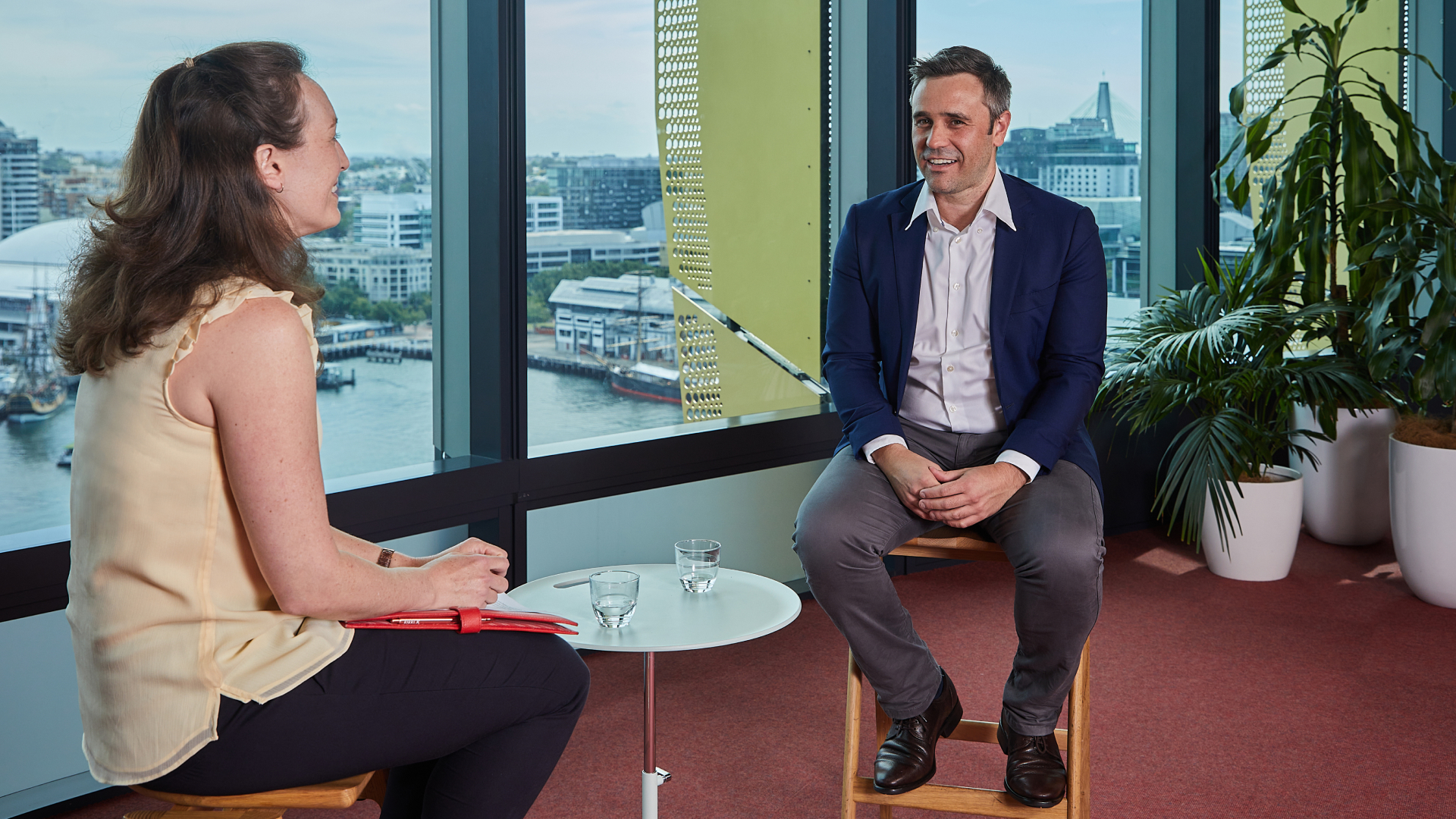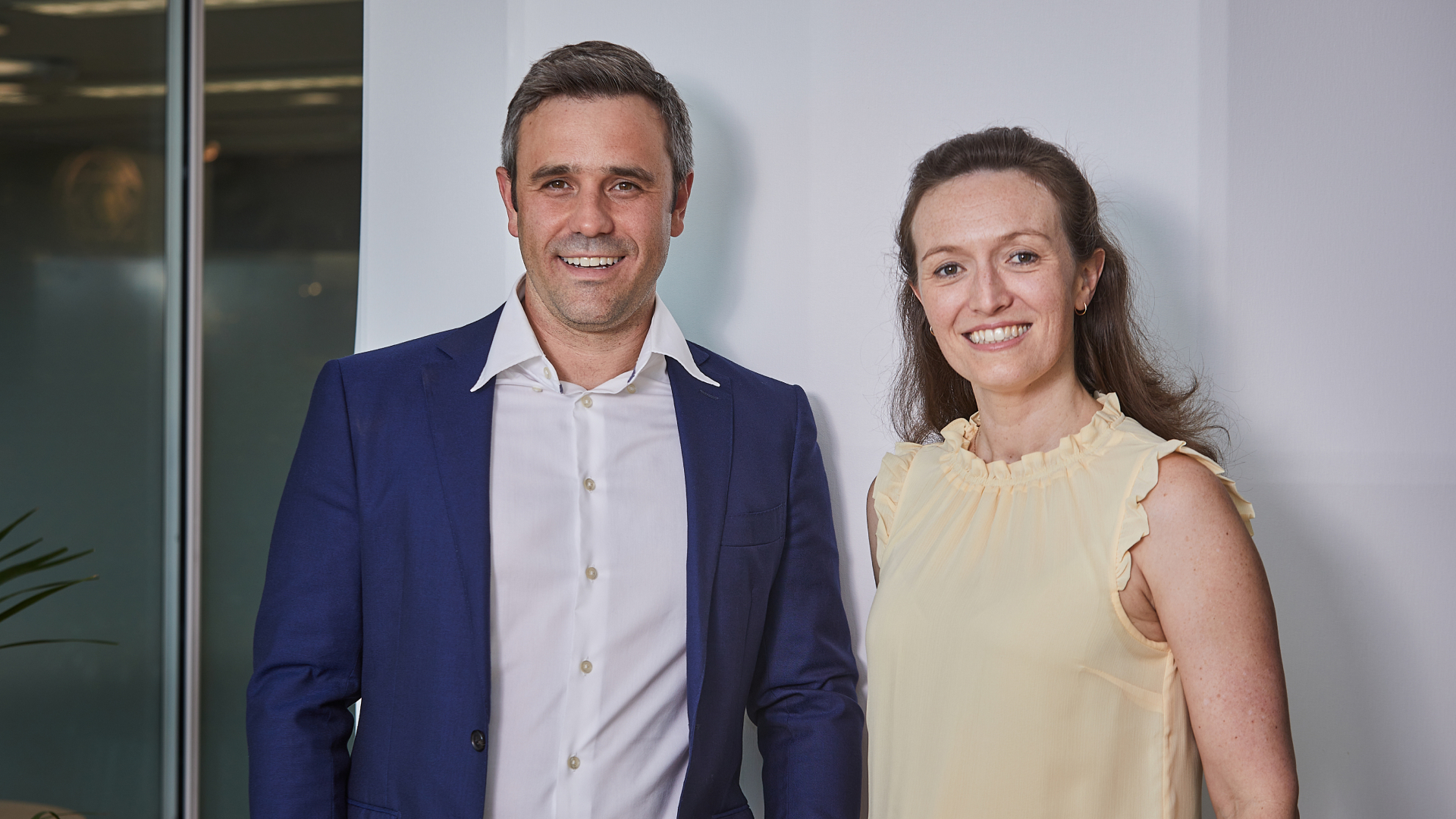How to beat the market with ETFs in 2024
The ETF market has exploded in recent years and currently stands at more than $165bn in assets under management across 323 ASX-listed products. Investors like ETFs for their convenience, ease of use, diversity of options, and ability to offer broad exposure. But with so many products available, where should investors be looking?
Stockspot’s founder and CEO, Chris Brycki, believes that a consistent and simple approach can be highly rewarding for investors in the ETF space. In the past, he’s put the case to Livewire’s Ally Selby that you only need five ETFs to outperform the market and it’s a view he still holds.
But what if outperforming the market isn't your only objective? What if you need to manage inflation or generate an income?
In this interview for Livewire’s Outlook Series 2024, Brycki shares how he looks at ETFs for these different concerns. He also shares some of his favourite ETFs and his top three tips for ETF investors.
This interview was filmed on 12 December 2023. Any discussion regarding financial products is general in nature and does not take into account personal financial objectives or concerns. Any discussion of performance is for illustrative purposes only - past performance is not a reliable indicator of future return. You should do your own research and/or seek expert advice before investing in any of the ETFs discussed.
Topics discussed
0:28 – Trends in the ETF marketplace
2:49 – Innovations in ETFs
4:26 – How to use ETFs to manage inflation in your portfolio
7:26 – Investing for income with ETFs
9:04 – Stockspot’s 5 ETFs to beat the market
10:32 – Allocations for the coming year
11:40 – Brycki’s top 3 tips for ETF investors
Edited transcript:
The Australian ETF market is now worth over $165bn. What trends have you been seeing?
There’s been a few.
The rapid growth you mentioned is one of them. The assets under management keeps growing faster and faster every year. Compared to when I set up Stockspot 10 years ago, it’s grown from $10bn to over $165bn. That’s huge growth.
In terms of more specific trends, one of them would be that big, broad-market, index ETFs have been quite aggressive in cutting fees. Part of this, I think, is to drive headlines. They want to have the lowest cost ASX ETF or global ETF because that helps them get eyeballs to their businesses and then obviously, they offer other types of products. I think it also shows the economies of scale they’re getting. So, reducing costs in large, broad-market ETFs is one.
The other interesting trend is that there are a few more conversions from active funds into that ETF structure. A lot of the active funds are realising the benefits of having that open-ended transparent listed structure, and a lot of investors are demanding it these days. We’re seeing more conversions from other types of vehicles into the ETF structure, and that’s happening more and more.
And then, there’s thematic ETFs. There’s a lot of growth happening on the issuer space rather than the asset side. On the asset side, we are still seeing 90% of flows going to broad-market ETFs, but there’s a lot more listing in the thematic space. All sorts of different ETFs available in more specific niche sectors of the market.
.jpg)
There’s been record numbers of new ETFs being listed across the past couple of years. Are you using any of them?
We’re focusing on the long-term, diversified, low-cost ETFs in our portfolio. We like ETFs that have long track records, that provide exposure to lots of different sectors, countries, asset classes and currencies because diversification is the benefit we’re trying to give our clients.
A lot of these specific ones, although they can have fantastic run ups and a lot of them do double in a year and you’ll often see them in the “best of” lists, we also see having huge drawdowns of 50-80% as well.
We think they’re quite an efficient way of speculating compared to buying individual shares and slightly less risky, but we don’t think they’re necessarily for investors in our types of portfolios.
What innovations are you seeing across the ETF market, and what are you expecting to see in the next few years?
The big innovation that hasn’t really seeped into the Aussie market 50 years after it happened is the discovery of the cost-matters hypothesis in investing. Even though markets may be efficient or inefficient, the mathematical certainty of investing is that the return people receive on average will be the market return minus any cost they’ve paid. As investors really appreciate the impact of costs on investing, it’s driving a lot more money into these low-cost, diversified products, and that’s really the innovation that will stand the test of time. I think it’s the real secular innovation over the last many decades that will see more and more assets move from that active, high-cost world into the passive, low-cost world.
There are other more technical innovations. Magellan really drove one of them, which was this move for active products into the ETF structure, where they were comfortable that they could maintain the IP within their portfolios but still provide that listed liquid structure that trades close to net tangible asset value.
The other one that’s a bit unique in Australia is that we’re seeing a lot of active funds getting pressure from investors because their close-ended structure leads to a big discount on net tangible assets that can be closed if they switch into an ETF structure. That’s the other interesting innovation that’s really positive for investors. If you are an investor in one of these funds trading at a discount, it makes sense to put pressure on your manager for a more investor-friendly structure.
One of the big stories of 2023 was inflation. How can you use ETFs to manage inflation in your portfolio?
It was the big trend of last year, and this year we’re seeing the flip side. Last year, there were a lot of concerns about inflation getting out of control and rising in developed markets, including the US, UK and Australia. A lot of asset classes that benefit from rising or accelerating inflation benefited. In 2022, commodities were one of the best asset classes, whereas long-duration assets like tech shares did poorly.
This year was the opposite. Technology has been the best performing part of the market, whereas commodities has done badly. There is concern out there that inflation might be more persistent than people expect. History would certainly suggest that once inflation gets out of the box, which it has - it’s still close to 5% in Australia - it takes a long time to get back down into that two to three per cent range. Historically, that’s taken four to six years.
I think there’ll be continued interest in ETFs that give exposure to asset classes that have historically benefited from higher inflation. Those are commodities, resource shares, precious metals, inflation and protected bonds, and also infrastructure.
The ETF landscape is fantastic for getting exposure to these assets because you can get that access in a low-cost format.
.jpg)
What are some of your favourite inflation ETF picks?
One that’s been in our portfolio for 10 years now is the Global X Physical Gold ETF (ASX: GOLD). It’s a fabulous diversifier in a portfolio. Traditionally, bonds are seen as the diversifier for shares. That worked for over 30 years while there was a negative correlation between bonds and shares. When shares have had a big fall, often central banks have cut interest rates and that’s helped the bond market. But that’s not happening at the moment, or in the last crisis over 2022 when the bond market was actually the driver due to concerns about higher interest rates and inflation. Then, the share market did badly as well. Inflation is a driver of both of those asset classes potentially continuing to move in the same direction.
Historically when that happens, asset classes like gold are like the insurance on your insurance. So, that’s one we like.
There are other commodity-focused ETFs that give access to commodity futures, which are quite interesting as well. Then there’s also the very traditional resource share ETFs that have been around for a long time and give access to ASX 200 resource shares. Those are ones we think are good ones for investors.
Infrastructure, interestingly, hasn’t done that well, even in an environment with concerns around inflation, but it may do better in other types of inflation-focused markets.
Then inflation-protected bonds are the other one. We like all of those for investors that have a goal of protecting against inflation.
Off the back of inflation concerns, income has been a big concern for many investors. Can you use ETFs to generate income for your portfolio?
You definitely can, although I’d say there are a few things that investors need to look out for when they’re trying to focus their ETF portfolio on income.
The two we see as important would be, first of all, making sure you are in an ETF that’s well-diversified. There are quite a lot of concentrated income ETFs that are very volatile.
The other one is making sure that you’re not sacrificing capital returns when you’re focusing on income, because, in the ETF space, there are a lot of products that advertise a very high headline return, a high headline dividend return that might be 7-8%. It’s very appealing for investors, and particularly self-managed super funds and people trying to draw an income. But a lot of these products are structured products where they’re basically stealing from one side of the equation, the capital return side, to give to the dividend side of the equation. You’re stealing from Peter to give to Paul. It’s a bit of a maths trick. But, in the end, investors are paying high fees for these products.
The real part of the return that they need to focus on is the total return, the sum of both of these, which is often actually lower than just than the more simple diversified ETFs. On the income side, we like the very low-cost products out there. Like the Vanguard High-Yield Australian Shares High Yield ETF (ASX: VHY). On the global side, there’s the State Street dividend product that we like - SPDR S&P Global Dividend ETF (ASX: WDIV). They are diversified across lots of sectors on the market, but there’s no trickery involved in dressing the dividend up to be higher than it is.
A few years back, you said to Livewire that “you only need five ETFs to outperform the market.” Do you still believe that?
The ETFs:
- Vanguard Australian Shares Index ETF (ASX: VAS)
- iShares Global 100 ETF (ASX: IOO)
- iShares MSCI Emerging Markets ETF (ASX: IEM)
- iShares Core Composite Bond ETF (ASX: IAF)
- Global X Physical Gold ETF (ASX: GOLD)
Absolutely. Our philosophy at Stockspot is that boring is brilliant and most everyday investors can beat almost all of the professionals simply by having the discipline to do nothing most of the time. I think that’s where it gets really tricky because it is so hard to just sit on your hands and not do anything when there are constant temptations out there to buy something else, to sell something, to act. We read about these temptations all the time. An earnings release here. Some market forecaster predicting a market crash. The best thing for most people to do is absolutely nothing once you’re set in a low-cost diversified portfolio.
Then remember, in the end costs are the biggest drag on your performance versus the market returns.
If you can just set your costs low, diversify well and try not to predict the market, but rather prepare for different types of environments, we think that’s what is going to set investors up for success.
Having been around for 10 years now, the track record that we’ve developed shows that it’s ultimately the case that you don’t need complexity. You don’t need a lot of funky asset classes in your portfolio to drive good quality returns, although it’s not a popular message in the industry because the finance industry relies on complexity.
Still the same five ETFs?
The same five. We haven’t changed them in 10 years.
In the coming year, are you changing up any of your allocations?
No. In 10 years, as well as keeping the same five core ETFs, we’ve only changed our strategic asset allocation twice. So, very long-term strategic asset allocation. Where we’ve made those two changes, it’s because there’s been changes in the relationships between the asset classes because that’s what is required, having more or less of a defensive asset to give you a smoother path. It’s not something we expect to change very often. We are reviewing them all the time, so I couldn’t tell you if we are or aren’t going to change them next year.
We’re not changing tactical asset allocations every month or quarter like a lot of investment banks do, or others that are trying to predict whether emerging markets or developed markets are better, or growth versus defensive assets. We don’t try and predict because we don’t think that makes a lot of sense. 50% of predictions by financial experts turn out not to be the case. I think the 50% that do turn out, people think it’s due to skill, when in a lot of cases, it’s just luck. So, we don’t think it makes sense to tactically pick things. Instead, do nothing and investors will do better.
Finally, what are your top three tips for investors looking at ETFs?
One of the big tips I’ve mentioned before as an important focus area for any investment is costs. But don’t just focus on the advertised fee, because when it comes to ETFs, there are other costs involved as well. You have to cross a spread when you’re buying and selling and that can be wider or closer for different ETF providers. You need to think about the liquidity available – are there going to be buyers and sellers there when you want to buy or sell? These are the sorts of other costs you have to incorporate into your decision. For people out there looking at the big broad ETFs that are all pretty low-cost these days -3-10 basis points, you want to consider these other costs as well. Even the turnover in the portfolio is important to consider because the tax consequences of turnover leads to a cost for investors. So, cost is an important one.
Think about diversification across your whole portfolio and be careful about double-up diversification, which I would define as when someone has lots of different things in their portfolio but they’re all ultimately the same thing. We get a lot of clients coming to us to review their portfolios and when we do, they’re often surprised when we say “Actually, you don’t have a lot of diversification”. They’ll say, “Look, we’ve got 20 different funds in there.” But if you look at the underlying shares within each of these funds, there’s a lot of overlap.
So, if you are building a portfolio, making sure the underlying assets and shares within your portfolio are different is important, but not only different – that they’re going to do well and badly in different types of markets so you’re going to have more of a smooth path.
Something we’ve also seen in the last few years is managers that have a big focus on one area like tech shares or value shares can have big drawdowns as well, because one area of the market like that can do very well for a while but then do very poorly as well. That would be my second tip.
And the last tip really goes back to something I was saying. There are always temptations to do something and next year will be no different. There’ll be someone that says, “There’s about to be a recession”. Unfortunately, there’ll be unrest in other parts of the world. There’s a US election coming up and people making predictions about that.
But if you can avoid the temptation to listen to predictions and simply focus on having the discipline to do nothing, you’re going to be better off over the long run.
4 topics
7 stocks mentioned
7 funds mentioned
1 contributor mentioned



